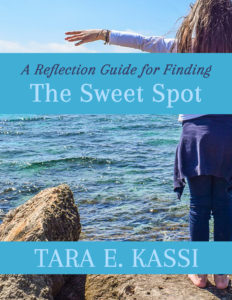Wouldn’t it be great if you actually had the time during the school day to grade those papers and plan your lessons instead of working on those things when you get home at night?
Eliminating all the work you take home may not be possible, but significantly reducing the amount of work you take home absolutely is possible.
Efficiency is doing things right; effectiveness is doing the right things. –Peter Drucker
Effectiveness is the ability to produce your desired effect. Efficiency is about doing it in a way that uses the least amount of time, energy, and resources.
At the intersection of effectiveness and efficiency is the sweet spot—getting the most desirable result with the least amount of work. This sounds great, but what’s the point?
Why is it so important to be operating from the “sweet spot”? When operating out of this place, not only does it build confidence and resilience, but also, and more importantly, it creates margin.
Margin Matters
Andy Stanley describes margin as “breathing room—the space between our current pace and our limits.” Every teacher that I know could use more breathing space—more margin—between their current pace and their personal limits.
Margins are those glorious, empty spaces that allow us to breathe. They give us time to recharge. -Jed Jurchenko
When we don’t have margin in our professional lives, we are increasingly stressed and our personal lives suffer as well. Our enjoyment of life begins to wane. “Life becomes an exhausting flow of endless activity,” according to Jed Jurchenko.
When Effectiveness & Efficiency are Out of Balance
We need to find the right balance between effectiveness and efficiency to help us increase the margin in our professional and personal lives.
Teachers who are effective but not efficient are often accomplishing the things that matter most at the expense of themselves. They spend an enormous amount of time, energy, and/or resources to get those results. At the end of the day, they do not have much left for themselves.
Teachers who are efficient but not effective may be super organized and run things like a well-oiled machine, but often it is at the expense of the desired effect. Their organizational abilities may seem effortless. They spend the least amount of time, energy, and resources to put things in place so that everything runs according to plan.
Oftentimes, their “organized plans and systems” don’t allow for any deviation or interruption including the need for flexibility in response to what students need.
At the end of the day, they may have missed the most important goals like student learning and building relationships, and they can’t understand why they aren’t seeing the results they want.
Esteeming efficiency at the expense of effectiveness is dangerous.
. . . If we are building the wrong product really efficiently, it’s like we are driving our car off a cliff and bragging about our awesome gas mileage. – Eric Ries
Teachers, who are effective and efficient, use the least amount of time, energy, and resources to have the greatest impact on things that matter most. This is the sweet spot—the greatest opportunity for increased margin in your professional life, which in turn creates margin in your personal life.
Assessing Your Effectiveness & Efficiency
A few simple modifications to your practices and/or processes can increase both your effectiveness and your efficiency. How do you know if you are being as effective or efficient as you can be?
Click on the image below to sign up for my newsletter and
Download the free e-book, A Reflective Guide for Finding the Sweet Spot.

